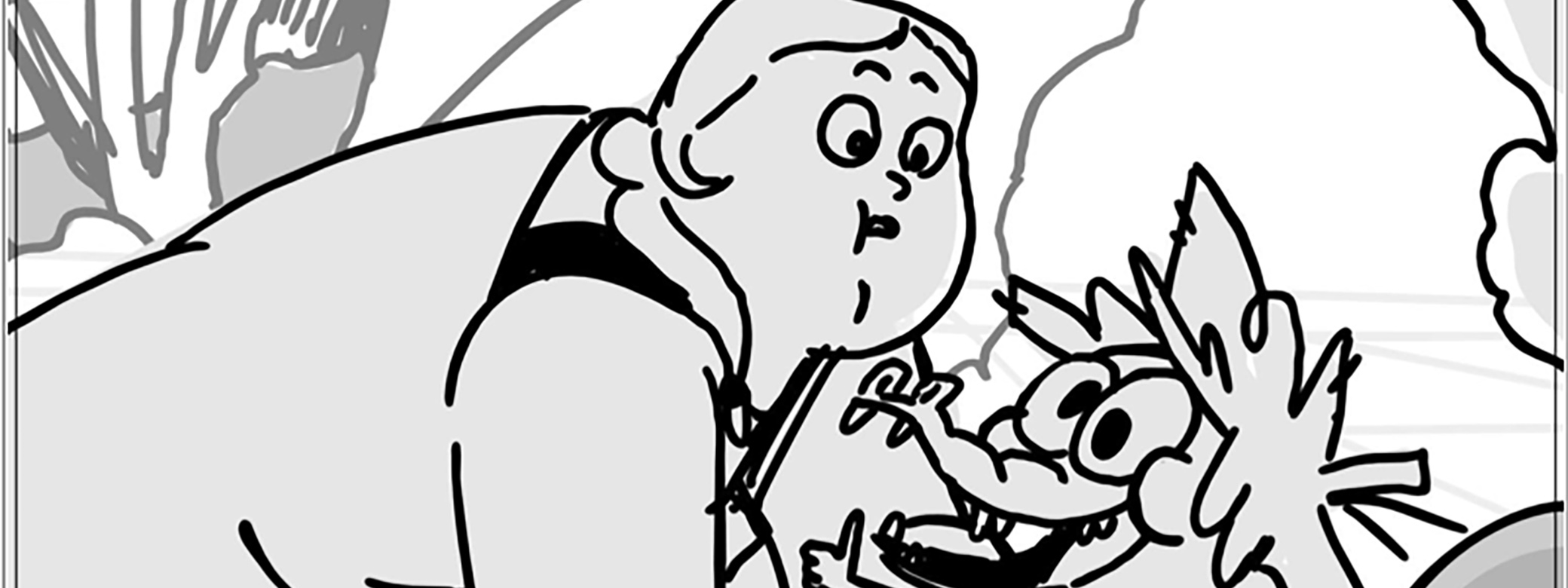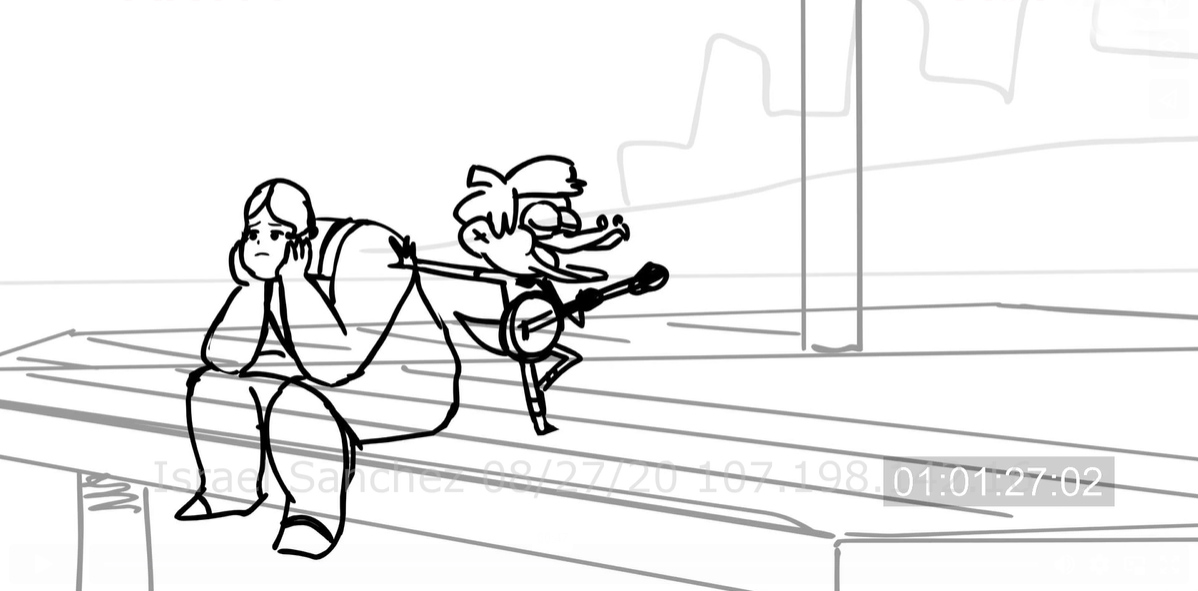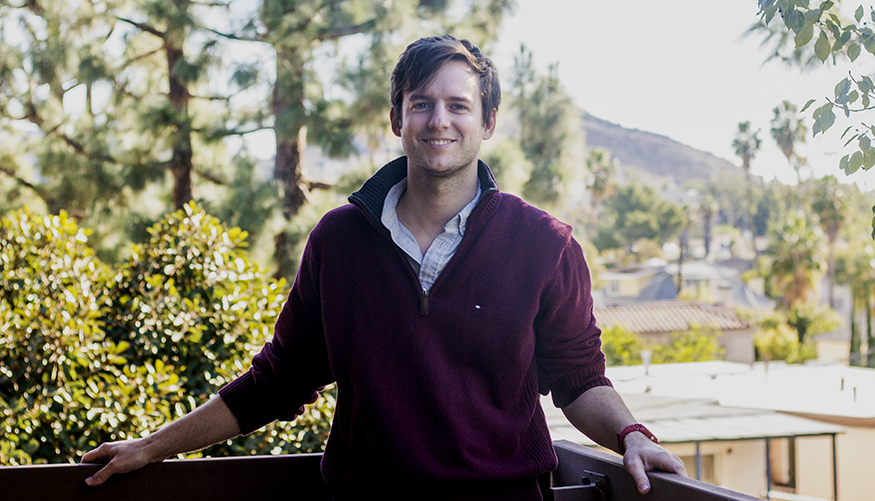
Nathan Jones (BA, 2015) always loved the arts. He started a garage band in middle school and created cover art for the band’s self-produced CDs in high school. He later drew an 80-page comic featuring album lyrics. But when it came time to decide on a college major, he choose engineering. A safer choice, he reasoned.
The wrong choice, he soon discovered.
“I reached a point where I felt miserable trying to do my pre-engineering courses,” says Jones, who studied at Bellevue College as a high school student through Running Start. “I felt like I needed to be doing something else, like this wasn’t my calling.”
When Jones transferred to the UW, he chose majors based on interest rather than career security: creative writing in the Department of English and painting and drawing in the School of Art + Art History + Design. That decision paid off. Jones now has his dream job at Titmouse, an animation production company.
Bringing Breadth to Animation
Jones first applied for animation internships as a UW senior. Despite contacting more than two dozen companies “even tangentially related” to animation, he heard back from just one. Fortunately it was Nickelodeon, one of his top choices. “The moral of that story is that it’s a numbers game,” he says. “You have to throw a wide net and see what comes in.”

Soon after that internship, Jones graduated and worked briefly as a development trainee at Sony Animation. He then landed a job at Titmouse, working on animated shows for children as a storyboard revisionist and later a storyboard artist. All animated shows begin with a storyboard, which serves as the blueprint for the final, fully realized animation.
“Storyboard designs are rough black-and-white sketches to plan out what the shots and character poses and facial expressions are going to be,” Jones explains. “The storyboard is basically a guide to what the animators need to animate and what the designers need to design.”
Many of Jones’ colleagues at Titmouse graduated with animation degrees and started their first job with storyboard experience. Jones was new to the storyboard process. Despite the steeper learning curve, he never regretted studying at the UW. In fact, he quickly found his more expansive UW education to be a strength.
“I feel like I have a broader view of the artworld than somebody who went to a school that’s an animation industry feeder,” he says. “I didn’t just study Chuck Jones and Walt Disney and all the famous animators. I got to learn about Cezanne and Rothko. I learned about classical art all the way through postmodern art. It’s given me a more unique voice.”
This example of a storyboard is from the Netflix series "I <3 Arlo," written and storyboarded by Nathanael Jones. Property of Netflix Animation.
Jones also valued the deep satisfaction of studying what he loved. Having fulfilled nearly all general education requirements at Bellevue College, he was able to give his full attention to art and creative writing at the UW.
“It was amazing,” he says. “I was totally focused on exactly the things I wanted to be focusing on. I had felt so much anxiety about pursuing the arts, so once I decided that I was going to do that, I wanted to do it really seriously, to give it all my attention.”
Particularly memorable was a senior seminar for painting and drawing majors, in which every student was provided individual studio space. “It was the most inspiring environment,” Jones recalls. “There was such a sense of community. You’d go down the hallway and see everybody working on some interesting thing that they really cared about. I feel like a lot of us found a creative voice while we were doing that. It was a unique feeling of being part of something while also being so independent.”
An Advantage for Storytelling
Jones also loved his UW creative writing courses and found that they helped his career. While most animated shows treat writing and storyboarding as separate jobs, some combine the two skills. Jones was chosen by Titmouse for one such show, Mao Mao, after demonstrating his storytelling chops. The show follows the adventures of a daring cat who protects the citizens of a small town with the help of two animal sidekicks.

To compete for the position, Jones had to draw sketches and write jokes for characters in a specific scenario. “I was definitely not the most experienced artist applying for the job, but most of the artists didn’t have a writing background,” he says. “I had an opportunity to flex my writing muscles, to say, ‘Okay, this story is funny, but how do we give this story structure?’ Or ‘I think this is a great scene, but how do we tie it in with the big picture of the whole episode?’”
Jones has since worked on other animated shows, but Mao Mao remains his favorite. “That show was very close to my heart,” he says. “We were given a lot of creative freedom, and I feel like I got to have my own personal voice. Or maybe the voice of the show was just close to my voice. I even got to write several songs for the show.”
Thinking back to his pre-engineering courses before arriving at the UW, Jones shakes his head. He is thankful that he made the decision to follow his gut and pursue what he loved instead.
“I had this misconception that I wouldn’t be able to make a career of it,” he says of his art and creative writing degrees. “I’m really grateful that I chose the path I did. I’m glad I pushed through to get to where I am now.”
More Stories

A Statistician Weighs in on AI
Statistics professor Zaid Harchaoui, working at the intersection of statistics and computing, explores what AI models do well, where they fall short, and why.
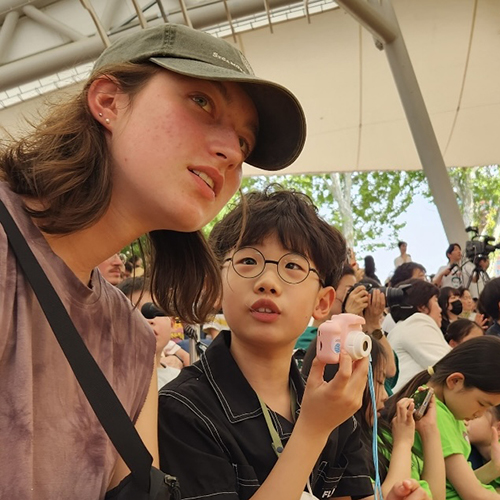
Finding Family in Korea Through Language & Plants
Through her love of languages and plants — and some serendipity — UW junior Katie Ruesink connected with a Korean family while studying in Seoul.
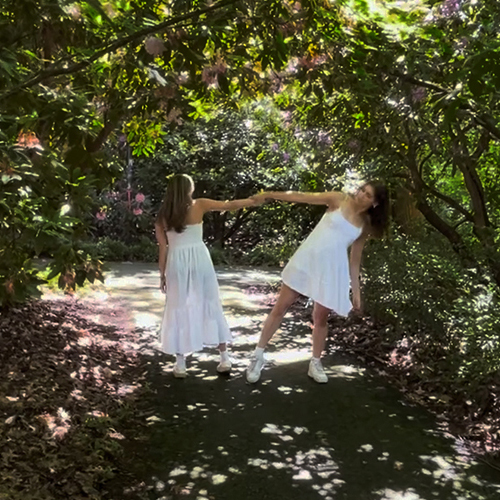
Dancing Across Campus
For the dance course "Activating Space," students danced in public spaces across the University of Washington's Seattle campus this spring.
